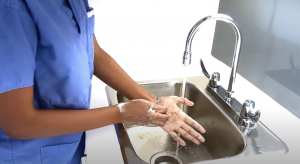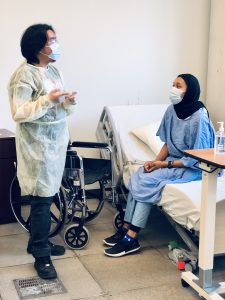Registered Nurses
by David Beazely and Celine Gould
What is the role of Nurses?
In Ontario, the nursing profession is governed by a self-regulating body known as the College of Nurses of Ontario (CNO). The professional standards outlined by the CNO apply to all nurses at all levels of practice, however, CNO comprises two main categories: Registered Nurse (RN) and Registered Practical Nurse (RPN).
RNs and RPNs study from the same body of nursing knowledge however RNs study for a longer period of time and, consequently, have a broader foundational knowledge base for their clinical practice. RN’s graduate with a university degree and RPN’s graduate with a college diploma. Nurse Practitioner (NP) is a further designation for RNs who have obtained an additional level of education (i.e., graduate degree) and clinical experience.
Regardless of designation, titles used by nurses are legally protected and only members of the CNO may use the title of “nurse”, “registered nurse”, “registered practical nurse,” “nurse practitioner,” “RN,” “RPN,” or “NP.” (CNO, 2020). CNO membership is contingent not only upon the successful completion of a nursing education program and registered licensing exam, but also upon meeting the entry-to-practice competencies specifically outlined by the CNO.
Infection Prevention and Control Practices
The nurse’s role with regards to infection prevention and control practices (IPCP) is related to direct client care, the healthcare environment, and health promotion and education. In comparison to most members of the healthcare team, nurses often spend the most amount of time in direct contact with clients, their care partners, and families. Thus, nurses must be knowledgeable in CNO standards that apply to IPCP, as well as maintain competency in current best practice guidelines and specific workplace institutional policies.
Some roles related to infection prevention and control practices that nurses are responsible for include:
- Perform a risk assessment prior to each client to assess the potential risk of transmission of microorganisms.
- Practice and promote proper hand hygiene. Hand hygiene is the single most important infection prevention and control practice.

- Adhere to routine practices and additional precautions.
- Use of clean or aseptic technique, when required.
- Provide client health promotion and education, which includes care partners, family, friends, and visitors (e.g., hand hygiene, respiratory etiquette, immunizations).
- Implement of up-to-date best evidence-informed IPCP guidelines.
- Use of a minimally invasive approach (e.g., using a bladder scan on a client to assess the need for a urinary catheter).
- Use of safety devices (e.g., locking needles immediately after use and disposing of them in sharps containers.
- Clean and disinfect medical equipment, surfaces, and work environment as necessary (e.g., before, during, and after each client).
Interprofessional Collaboration
The nurse’s role with regards to interprofessional collaboration (IPC) focuses on collaborating, gathering, and distributing information, as well as implementing recommendations of other health disciplines. Nurses are responsible to share client information, through communication and documentation, with the client’s interprofessional team to ensure optimal safe client care.

Clients are part of the interprofessional team. Through therapeutic communication, nursing care and frequent assessments, nurses often have opportunities to ask clients, as well as their care partners, for information that supports the client’s overall care. Nurses have an important role to advocate for clients when in discussion with other healthcare providers of the interprofessional team.
Some interprofessional collaboration roles that nurses are responsible for include:
- Working with the client to explore other interprofessional disciplines that might be appropriate and beneficial towards client care.
- Communicating the client’s status and needs with other members of the interprofessional team.
- Advocating on behalf of the client, ensuring the client is the central focus, and active partner of the interprofessional healthcare team.
- Understanding the roles and responsibilities of interprofessional team members.
- Implementing the recommendations from other healthcare providers into the client’s care plan.
- Providing open and clear communication with all interprofessional team members, which includes the client and their care partners, as part of the care team.
Reference
College of Nurses of Ontario. (2020). An Introduction to the Nursing Act, 1991. https://www.cno.org/globalassets/docs/prac/41064_fsnursingact.pdf
Media Attributions
- Hand Hygiene © Michelle Hughes is licensed under a CC BY (Attribution) license
- Nurse-Client Collaboration © Michelle Hughes is licensed under a CC BY (Attribution) license

